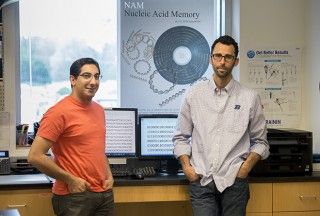Of course bio technology holds the key for better memory.
Newswise — A group of Boise State researchers, led by associate professor of materials science and engineering and associate dean of the College of Innovation and Design Will Hughes, is working toward a better way to store digital information using nucleic acid memory (NAM).
It’s no secret that as a society we generate vast amounts of data each year. So much so that the 30 billion watts of electricity used annually by server farms today is roughly equivalent to the output of 30 nuclear power plants.
And the demand keeps growing. The global flash memory market is predicted to reach $30.2 billion this year, potentially growing to $80.3 billion by 2025. Experts estimate that by 2040, the demand for global memory will exceed the projected supply of silicon (the raw material used to store flash memory). Furthermore, electronic memory is rapidly approaching its fundamental size limits because of the difficulty in storing electrons in small dimensions.
